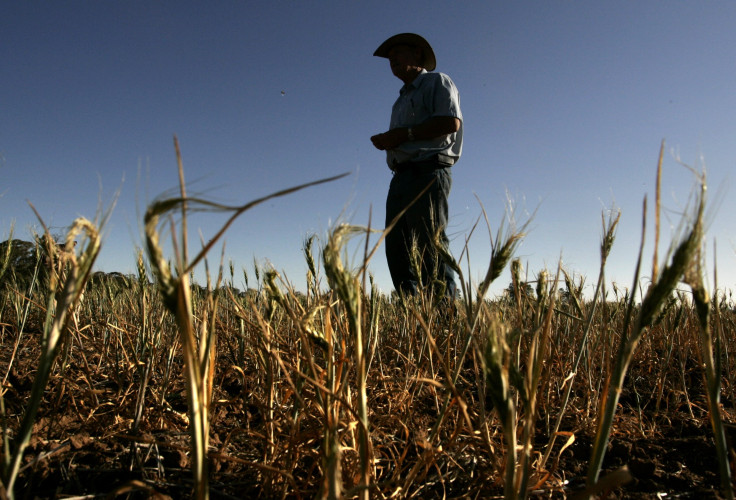El Niño's Effects: Australian Heat Wave And India's Missing Monsoon

Winds are shifting and waves are sloshing out in the Pacific Ocean, threatening to stir up an El Niño phenomenon in the coming months. Yet some countries are already feeling the earliest impacts of the weather event, according to media reports this week.
In Australia, meteorologists say, the nationwide rainfall last month was 32 percent below the June average, and in India dry conditions are delaying the sowing of rice, corn, soybeans and cotton.
"The rainfall pattern has gotten distorted this year, and it will have some impact on agricultural productivity," Dharmakirti Joshi, chief economist at Crisil Ltd., S&P's local unit, told Bloomberg News from Mumbai.
Scientists credit these and other weather anomolies to the initial stages of an El Niño event, which the U.N. weather agency said is highly likely to reappear before the end of this year. Some climatologists have said that an early, weak El Niño has already formed, though no government agency has officially confirmed as much.
During normal years, warm waters typically pool in the western Pacific and cool waters hover off the coast of the Americas. But in an El Niño event, waves and winds push the warm water toward the east. Since warm ocean temperatures help create rain clouds, South American countries and California typically experience heavy rainfalls and severe flooding from El Niños. The western Pacific, by contrast, is more prone to drought and warmer weather on the ground. (The inverse, La Niña, is characterized by unusually cold water temperatures in the Pacific).
El Niño Explained: What Is This Weather Phenomenon And What's On Tap For 2014?
El Niños occur about every four years, and the most recent event appeared in late 2009 to early 2010. Scientists project this year's event will be moderate like the last one, though initially they thought it could mirror the devastating strength of the 1997-98 El Niño.
On top of low rainfall, Australia is also experiencing record-high heats. Last month it smashed its temperature record for the 12-month period ending in June, with temperatures rising to a full 1.08 degrees Celsius above the long-term average, according to Australia's Bureau of Meteorology, Sydney Morning Heraled noted.
India received just 92.4 millimeters (3.6 inches) of rain last month, about half as much as the average between 1951 and 2000, the India Meteorological Department said. And the monsoon, which brings critical rainfall to the country's crops, has made no progress over India's western and central regions in the last three weeks, Bloomberg reported.
Indonesia could also take a big hit during a moderate El Niño event. The country is now entering the dry season, and a drought layered on top of that would make its forests especially brittle -- good news for the people who burn trees to clear the way for palm oil plantations. During an El Niño, the large-scale forest clearance would exacerbate the threat of forest fires, Jakarta Post noted this week.
The news was a bit brighter on the opposite side of the Pacific. In Brazil and Chile, heavier rainfalls caused by El Niño are expected to boost agricultural output and help refill the reservoirs that feed hydroelectric plants, which have reached record lows because of drought or low rainfall in recent years, according to a report by Moody's Investor Service released on Tuesday.
Peru, on the other hand, will likely be harder hit. Warm waters off the Andean coast are already keeping away schools of anchovies, which are used to make fishmeal for animal feed and fish oil supplements. Peru's National Fisheries Society requested an "urgent action" from the government in June to allow for fishing farther off the coast. Flooding and landslides could also severely damage the country's infrastructure.
Still, Peru has the necessary assets to pay for such damages, Moody's said. Government and banks throughout South America are similarly in good enough financial shape to deal with costs related to flooding, emergency aid relief and rebuilding damaged infrastructure. That marks a sharp departure from the 1997-98 El Niño, the strongest in recent history, which wreaked widespread havoc in the Americas and dealt a stiff blow to the continent's weak economies.
© Copyright IBTimes 2024. All rights reserved.





















